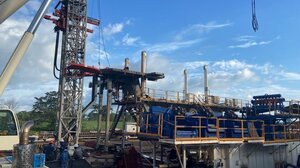The Energy Report: Interest in merger and acquisition (M&A) deals in the oil and gas space seems to be picking up. Pioneer Pioneer Natural Resources Co. (PXD:NYSE) made headlines last January when it sold 207,000 net acres of its Wolfcamp shale leases to Sinochem Group (00817:HK) for $1.7 billion. Does this signal a trend of international companies investing in North American shale plays at a premium?
"International players have a lot to gain by establishing a foothold in North America."
Daren Oddenino: For an international company acquiring a U.S. domestic asset, the valuation is high, but it's not out of line with some past transactions. It would seem high if it were another domestic player acquiring those assets at that price, but International players pay a premium because they want entrance to the U.S. market and access to advanced horizontal drilling technology. International players have a lot to gain by establishing a foothold here.Horizontal completion technology in the U.S. is leading the way.
TER: Would you expect more of this kind of deal to occur?
DO: We'll, I don't think we'll be seeing them frequently, but we'll definitely continue to see an international interest in U.S. assets. For example, in 2011 Statoil ASA (STO:NYSE; STL:OSE) bought Brigham Exploration Co. and BHP Billiton Ltd. (BHP:NYSE; BHPLF:OTCPK) bought Petrohawk Energy Corp. International entities are actively participating in both asset and corporate transactions. It's a general trend that we expect to continue.
TER: How can investors identify a company in the oil and gas industry that is ripe for merger or acquisition? What are the signs?
"Look at companies with big asset bases—big enough to create a lot of running room while stilling providing low-risk development upside."
DO: Investors should look at a company that has a big asset base—big enough to create a lot of running room while stilling providing a low-risk development upside. There has to be a gap between the value the Street is placing on a company and the ultimate, fully developed value of that targeted company's asset base. If that gap is big enough, a buyer can come in and acquire a company at a premium to where it is currently trading and still have additional value to develop those assets in an accretive manner. That's when a company could be viewed as a good acquisition candidate.
Another factor to consider is all the regulatory- and legal-related expenses associated with corporate acquisitions. It makes more sense for international companies to defray those costs over a bigger asset base. They want something they can sink their teeth into. But it's not as cost-intensive for domestic exploration and production companies (E&Ps) to buy other domestic E&Ps. Domestic strategic acquirers can also appear when the deal size is a little smaller.
TER: What are the defining criteria for assessment of an M&A target in oil and gas? Should investors look at the resource base? Proved reserves? Production rates and costs? Access to infrastructure? Management?
"Another factor to consider is all the regulatory- and legal-related expenses associated with corporate acquisitions. It makes more sense for international companies to defray those costs over a bigger asset base."
DO: It's different for every entity. Some entities want to make bolt-on acquisitions and acquire assets where they are already operating that would provide additional low-risk development upside. For example, when Concho Resources Inc. (CXO:NYSE) bought Three Rivers Operating Co. last year for $1B in cash, Three Rivers had a lot of acreage very close to where Concho was already operating in the Midland and Delaware basins. From Concho's standpoint, it made a lot of sense to acquire those assets as a strategic bolt-on. When domestic E&P companies are looking to expand their footprint, those bolt-on opportunities are extremely attractive. However, juxtaposed to that is the acquisition Rosetta Resources Inc. (ROSE:NASDAQ) recently made. The company wanted to expand beyond its Eagle Ford acreage and establish another core area in the Permian Basin, so it acquired Comstock Resources Inc. (CRK:NYSE) assets in that area.
TER: Saratoga Resources Inc. (SARA:NYSE.MKT) entered into a joint venture negotiation with McMoRan Exploration Co. (MMR:NYSE) last year; does that make it a possible acquisition target?
DO: At current trading levels, I think a lot of companies could be looking at Saratoga. The company is trading well below its proved value and carries a lot of upside. Saratoga has a plan to develop some of its lower-risk proven undeveloped reserves this year, and there's a big opportunity there.
TER: What advice would you have for investors concerned about weathering volatility?
DO: In the oil and gas space, stock performance is always going to be highly correlated to commodity prices. As such, investors will always be subject to the whims of commodity prices. But when it comes to evaluating an individual company, we look at the worth of its current asset base. What has the management team done in the past and has it executed according to plan? How much additional running room does the company have? Our research strategy or thesis is to follow undervalued micro- and small-cap companies until they get taken out by an industry player, or we follow them through their growth cycles until they become mid-cap players that are able to execute their plans and continue to grow with fiscal discipline. We tend to stay away from companies with really complicated balance sheets and "exotic" financing products in their capital structures.
TER: Magellan Petroleum Corp. (MPET:NYSE) stock price is in the $1 range right now. Has that changed significantly? You have recommended it as Buy.
"We tend to stay away from companies with really complicated balance sheets and 'exotic' financing products in their capital structures."
DO: The company has some producing Poplar field assets in Montana and some producing Australian natural gas assets, as well as large exploratory acreage positions in offshore Australia and onshore in the U.K. There could be a lot of upside potential to those Australian and U.K. assets, but capturing additional value would require exploratory success. But Magellan has a lot of optionality too—it can sell some of its international assets and take some profit off the table. The exciting catalyst for Magellan is the opportunity to test its CO2-Enhanced Recovery project in the Poplar field's Charles formation. If that proves successful, Magellan should be headed for a lot of growth.
TER: Your buy target for Approach Resources Inc. (AREX:NASDAQ) is $43, but over the long term the stock has seldom exceeded $35. Is $43 realistic?
DO: There's definitely a lot of running room associated with Approach Resources. Approach Resources has almost 150,000 (150K) net acres in the Permian Basin. The company has evolved from a tight gas sands producer to a horizontal Wolfcamp player. It started developing Wolfcamp in 2010/2011 and it has 2K unbooked potential well locations as it develops the A, B and C benches of the Wolfcamp.
Approach has just built some additional infrastructure allowing it to reduce its water hauling and trucking costs, so its costs and price realizations are going to get better and well results continue to meet or exceed expectations. It's tough to find a position where you have 150K nearly contiguous net acres, so there's definitely a lot of upside associated with their asset base and development program. Approach has been very methodical about developing its assets and investors may have wanted the company to go a little faster than it has, but this cautious methodology will ultimately benefit Approach and allow it to most efficiently develop its assets and maximize the potential recoveries. We're big fans of the Approach story.
TER: You recently bumped the target for Diamondback Energy Inc. (NASDAQ:FANG) up from $26 to $30. What was your thinking behind that?
DO: Diamondback is another Wolfcamp player that went public in October of last year. It was drilling some shorter lateral lengths and now it looks like it is going drill more of its wells on longer, 7K-foot lateral lengths. With those increased laterals, we expect better estimated ultimate recoveries. The change in target price was adjusted based on our development scenario accounting for the better estimated ultimate recoveries associated with those longer lateral lengths. Diamondback has been very aggressive and had some good well results in its Wolfcamp program. We're seeing increased horizontal activity right in Diamondback's area, and Diamondback is well positioned to capitalize on its transition from a vertical Wolfberry player to a horizontal Wolfcamp player.
TER: Any final thoughts about the O&G space in general?
DO: The trend we expect to see is further advancements in horizontal drilling. A lot of companies are now focused on stacked lateral development with multi-horizon potential and increasing their well pads as much as five-fold, which is allowing for more efficient asset development. This seems to be the next phase of horizontal drilling and completion technology. Also, we're continuing to see E&Ps test the limits of horizontal well density with increased down-spacing. That's a positive trend as it boosts recoveries and increases potential recoverable resources over a fixed acreage position.
TER: Daren, thank you very much for your time and sharing your thoughts with us today.
Daren Oddenino is a senior analyst in the research group for C. K. Cooper & Co., a full-service investment bank. Oddenino has focused on the oil and gas sector since 2005, when he began his career at a middle-market M&A advisory firm working with privately held oil service companies. Oddenino also focused on small and mid-cap exploration and production companies while working at KeyBanc Capital Markets' oil and gas group as well as in the corporate finance group at Canaccord Genuity. During his career, he has participated in the execution and closing of over $8B in transactions, including equity and debt offerings, mergers, fairness opinions, PIPEs and arranging of senior credit facilities. Oddenino graduated from the University of Utah in Salt Lake City with a bachelor of science in Economics. He is a licensed FINRA broker and maintains Series 7, 66, 86,87, and 24 licenses.
Want to read more Energy Report interviews like this? Sign up for our free e-newsletter, and you'll learn when new articles have been published. To see a list of recent interviews with industry analysts and commentators, visit our Streetwise Interviews page.
DISCLOSURE:
1) Tom Armistead conducted this interview for The Energy Report and provides services to The Energy Report as an independent contractor. He or his family own shares of the following companies mentioned in this interview: None.
2) The following companies mentioned in the interview are sponsors of The Energy Report: None. Streetwise Reports does not accept stock in exchange for its services or as sponsorship payment.
3) Daren Oddenino: I or my family own shares of the following companies mentioned in this interview: None. I personally am or my family is paid by the following companies mentioned in this interview: None. My company has a financial relationship with the following companies mentioned in this interview: Magellan Petroleum Corp., Diamondback Energy Inc. and Saratoga Resources Inc. I was not paid by Streetwise Reports for participating in this interview. Comments and opinions expressed are my own comments and opinions. I had the opportunity to review the interview for accuracy as of the date of the interview and am responsible for the content of the interview.
4) Interviews are edited for clarity. Streetwise Reports does not make editorial comments or change experts' statements without their consent.
5) The interview does not constitute investment advice. Each reader is encouraged to consult with his or her individual financial professional and any action a reader takes as a result of information presented here is his or her own responsibility. By opening this page, each reader accepts and agrees to Streetwise Reports' terms of use and full legal disclaimer.
6) From time to time, Streetwise Reports LLC and its directors, officers, employees or members of their families, as well as persons interviewed for articles and interviews on the site, may have a long or short position in securities mentioned and may make purchases and/or sales of those securities in the open market or otherwise.

 Let's make one thing clear: There is no magic formula to determine which company will be the next big buyout story. But if there were a formula, it would include variables like asset value, management skill level, risk profile and location, location, location. Today, C. K. Cooper & Co. Analyst Daren Oddenino joins
Let's make one thing clear: There is no magic formula to determine which company will be the next big buyout story. But if there were a formula, it would include variables like asset value, management skill level, risk profile and location, location, location. Today, C. K. Cooper & Co. Analyst Daren Oddenino joins 






































